TETRAETHYLDIALUMINOXANE
Modify Date: 2024-01-07 00:09:05

TETRAETHYLDIALUMINOXANE structure
|
Common Name | TETRAETHYLDIALUMINOXANE | ||
|---|---|---|---|---|
| CAS Number | 1069-83-6 | Molecular Weight | 186.20700 | |
| Density | 0.86 g/mL at 25ºC | Boiling Point | 111ºC | |
| Molecular Formula | C8H20Al2O | Melting Point | N/A | |
| MSDS | N/A | Flash Point | N/A | |
| Name | diethylalumanyloxy(diethyl)alumane |
|---|---|
| Synonym | More Synonyms |
| Density | 0.86 g/mL at 25ºC |
|---|---|
| Boiling Point | 111ºC |
| Molecular Formula | C8H20Al2O |
| Molecular Weight | 186.20700 |
| Exact Mass | 186.11400 |
| PSA | 9.23000 |
| LogP | 3.82720 |
|
Version 1.5
Regulation (EC) No 1907/2006 1 - Product and Company Information Product NameTETRAETHYLDIALUMINOXANE, 1.0M SOLUTION I N TOLUENE 2 - Hazards Identification SPECIAL INDICATION OF HAZARDS TO HUMANS AND THE ENVIRONMENT Reacts violently with water. Spontaneously flammable in air. Toxic by inhalation, in contact with skin and if swallowed. 3 - Composition/Information on Ingredients Product NameCAS #EC noAnnex I Index Number TETRAETHYLDIALUMINOXANE, 1.0M1069-83-6 NoneNone SOLUTION INTOLUENE FormulaC8H20Al2O Molecular Weight 186,2100 AMU 4 - First Aid Measures AFTER INHALATION If inhaled, remove to fresh air. If not breathing give artificial respiration. If breathing is difficult, give oxygen. AFTER INGESTION If swallowed, wash out mouth with water provided person is conscious. Call a physician. 5 - Fire Fighting Measures CONDITIONS OF FLAMMABILITY Catches fire if exposed to air. EXTINGUISHING MEDIA Suitable: Carbon dioxide, dry chemical powder, or appropriate foam. Unsuitable: Do not use water. ALDRICHwww.molbase.com SPECIAL RISKS Specific Hazard(s): Pyrophoric material. Vapor may travel considerable distance to source of ignition and flash back. Emits toxic fumes under fire conditions. Explosion Hazards: Vapor may travel considerable distance to source of ignition and flash back. Container explosion may occur under fire conditions. SPECIAL PROTECTIVE EQUIPMENT FOR FIREFIGHTERS Wear self-contained breathing apparatus and protective clothing to prevent contact with skin and eyes. SPECIFIC METHOD(S) OF FIRE FIGHTING Use water spray to cool fire-exposed containers. 6 - Accidental Release Measures PERSONAL PRECAUTION PROCEDURES TO BE FOLLOWED IN CASE OF LEAK OR SPILL Evacuate area. Shut off all sources of ignition. PROCEDURE(S) OF PERSONAL PRECAUTION(S) Wear self-contained breathing apparatus, rubber boots, and heavy rubber gloves. METHODS FOR CLEANING UP Cover with an activated carbon adsorbent, take up and place in closed containers. Transport outdoors. Ventilate area and wash spill site after material pickup is complete. 7 - Handling and Storage HANDLING Directions for Safe Handling: Do not breathe vapor. Do not get in eyes, on skin, on clothing. Avoid prolonged or repeated exposure. STORAGE Conditions of Storage: Keep tightly closed. Store in a cool dry place. Incompatible Materials: Do not allow contact with water 8 - Exposure Controls / Personal Protection ENGINEERING CONTROLS Safety shower and eye bath. Use only in a chemical fume hood. GENERAL HYGIENE MEASURES Wash thoroughly after handling. Wash contaminated clothing before reuse. PERSONAL PROTECTIVE EQUIPMENT Special Protective Measures: Wear appropriate government approved respirator, chemical-resistant gloves, safety goggles, other protective clothing. 9 - Physical and Chemical Properties pH N/A BP/BP Range111,000 °C ALDRICHwww.molbase.com MP/MP RangeN/A Flash PointN/A FlammabilityN/A Autoignition TempN/A Oxidizing Properties N/A Explosive Properties N/A Explosion LimitsN/A Vapor PressureN/A SG/Density0,8600 g/cm3 Partition Coefficient N/A ViscosityN/A Vapor DensityN/A Saturated Vapor Conc. N/A Evaporation RateN/A Bulk DensityN/A Decomposition Temp.N/A Solvent ContentN/A Water ContentN/A Surface TensionN/A ConductivityN/A Miscellaneous DataN/A SolubilityN/A 10 - Stability and Reactivity STABILITY Conditions of Instability: Air. Reactions to Avoid: Reacts violently with: Materials to Avoid: Oxidizing agents, Water. HAZARDOUS DECOMPOSITION PRODUCTS Hazardous Decomposition Products: Carbon monoxide, Carbon dioxide, Aluminum, Aluminum oxide. 11 - Toxicological Information SIGNS AND SYMPTOMS OF EXPOSURE Exposure to and/or consumption of alcohol may increase toxic effects. Inhalation studies on toluene have demonstrated the development of inflammatory and ulcerous lesions of the penis, prepuce, and scrotum in animals. Lung irritation, chest pain, and edema which may be fatal. Exposure can cause: Symptoms of exposure may include burning sensation, coughing, wheezing, laryngitis, shortness of breath, headache, nausea, and vomiting. ROUTE OF EXPOSURE Multiple Routes: High concentrations are extremely destructive to tissues of the mucous membranes and upper respiratory tract, eyes, and skin. Harmful if swallowed, inhaled, or absorbed through skin. TARGET ORGAN INFORMATION Bladder. Kidneys. Liver. Brain. CONDITIONS AGGRAVATED BY EXPOSURE May cause nervous system disturbances. 12 - Ecological Information No data available. ALDRICHwww.molbase.com 13 - Disposal Considerations SUBSTANCE DISPOSAL Burn in a chemical incinerator equipped with an afterburner and scrubber but exert extra care in igniting as this material is highly flammable. Observe all federal, state, and local environmental regulations. 14 - Transport Information RID/ADR UN#: 3394 Class: 4.2 PG: I Subrisk: 4.3 Proper Shipping Name: Organometallic substance, liquid, pyrophoric, water-reactive IMDG UN#: 3394 Class: 4.2 PG: I Subrisk: 4.3 Proper Shipping Name: Organometallic substance, liquid, pyrophoric, water-reactive Marine Pollutant: No Severe Marine Pollutant: No Technical Name: Required IATA UN#: 3394 Class: 4.2 PG: I Subrisk: 4.3 Proper Shipping Name: Organometallic substance, liquid, pyrophoric, water-reactive Inhalation Packing Group I: No Technical Name: Required 15 - Regulatory Information CLASSIFICATION AND LABELING ACCORDING TO EU DIRECTIVES INDICATION OF DANGER: F-T Highly Flammable. Toxic. R-PHRASES: 14-17-23/24/25 Reacts violently with water. Spontaneously flammable in air. Toxic by inhalation, in contact with skin and if swallowed. S-PHRASES: 16-26-28-36/37/39-45 Keep away from sources of ignition - no smoking. In case of contact with eyes, rinse immediately with plenty of water and seek medical advice. After contact with skin, wash immediately with plenty of water. Wear suitable protective clothing, gloves, and eye/face protection. In case of accident or if you feel unwell, seek medical advice immediately (show the label where possible). Caution: Substance not yet fully tested (EU). 16 - Other Information ALDRICHwww.molbase.com WARRANTY The above information is believed to be correct but does not purport to be all inclusive and shall be used only as a guide. The information in this document is based on the present state of our knowledge and is applicable to the product with regard to appropriate safety precautions. It does not represent any guarantee of the properties of the product. Inc., shall not be held liable for any damage resulting from handling or from contact with the above product. See reverse side of invoice or packing slip for additional terms and conditions of sale. Copyright 2010 Co. License granted to make unlimitedpaper copies for internal use only. DISCLAIMER For R&D use only. Not for drug, household or other uses. ALDRICHwww.molbase.com SECTION 16 - ADDITIONAL INFORMATION N/A |
| Hazard Codes | F: Flammable;T: Toxic; |
|---|---|
| Risk Phrases | 14-17-23/24/25 |
| Safety Phrases | 16-26-28-36/37/39-45 |
| RIDADR | UN 3394 4.2/PG 1 |
|
~% 
TETRAETHYLDIALU... CAS#:1069-83-6 |
| Literature: Ashby, E. C.; Smith, R. Scott Journal of Organometallic Chemistry, 1982 , vol. 225, # 1 p. 71 - 85 |
| Precursor 2 | |
|---|---|
| DownStream 10 | |
| TETRAETHYLDIALUMINOXANE |
| Aluminum,tetraethyl-m-oxodi |
| Bis-<diaethylaluminium>-oxyd |
| Tetraethylalumoxan |
| Tetraethyldialuminoxane solution |
| tetraethylaluminoxane |
| MFCD00274198 |
| tetraethylalumoxane |
| Tetraaethyldialuminoxan |
| Tetraaethyldialumoxan |


 CAS#:493-77-6
CAS#:493-77-6![N-[α-Aethylbenzyl]-benzamidin structure](https://image.chemsrc.com/caspic/096/34570-58-6.png) CAS#:34570-58-6
CAS#:34570-58-6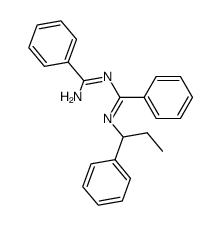 CAS#:76178-98-8
CAS#:76178-98-8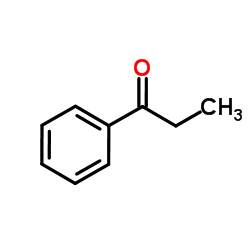 CAS#:93-55-0
CAS#:93-55-0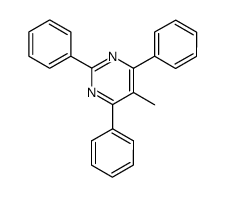 CAS#:1846-28-2
CAS#:1846-28-2 CAS#:100-52-7
CAS#:100-52-7 CAS#:1333-84-2
CAS#:1333-84-2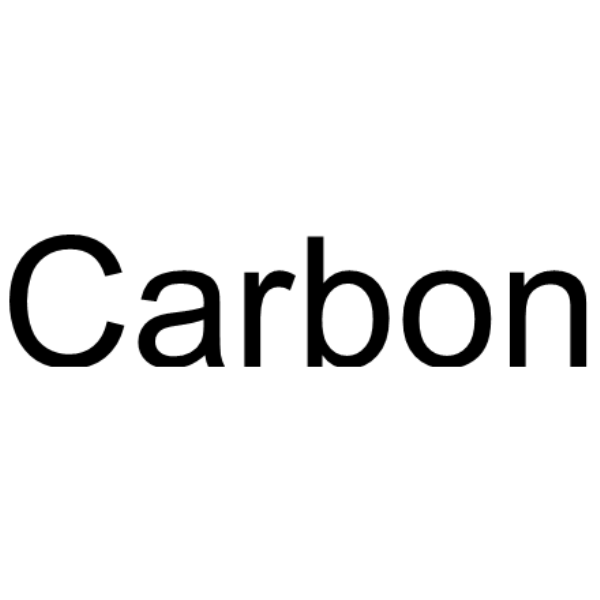 CAS#:7440-44-0
CAS#:7440-44-0 CAS#:7429-90-5
CAS#:7429-90-5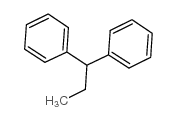 CAS#:1530-03-6
CAS#:1530-03-6